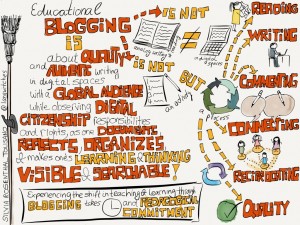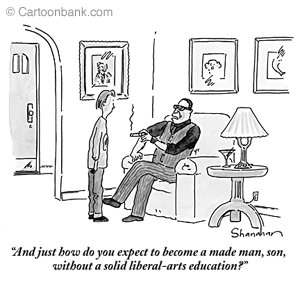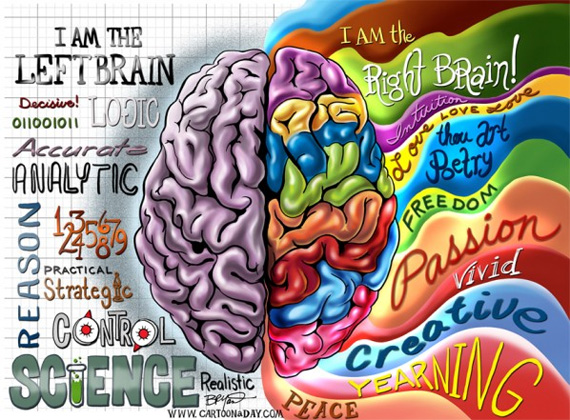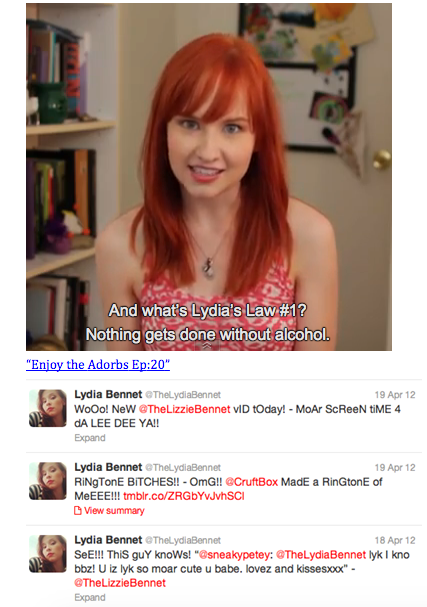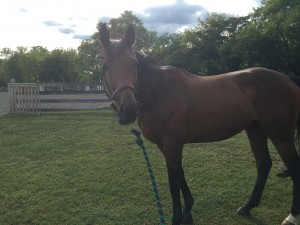
digitalmedia-bw
Throughout time, the tools of writing have evolved and, accordingly, writers have adapted to these changes and used them to the benefit of their craft. In today’s world, emails, Facebook, Twitter, Blogs, and other high-tech online platforms dominate the writing scene. As a millennial, and current college student, I cannot imagine existing without online communication. Almost every course has an “on-line” syllabus, homework gets posted on platforms such as Moodle and Connect, readings are posted online so students have easier and faster access to information, and some classes even require students to write blogs. All these modern tools, that didn’t exist ten years ago, are a definite benefit to course curriculums, and they help enhance learning and simplify the writing and research game. The aim of this paper is to broaden your knowledge as to what digital writing is and to explore why it is a good thing benefitting, not only the classroom, but the world at large.
Today’s social media is dominated by a plethora of platforms to access, sign up, and join. Twitter, Facebook, Instagram, to name just a few, are all sites that offer sharing spaces where individuals share various subjects with the public for conversation, ideas, and feedback. Pete Rorabaugh, the writer of the article “Organic Writing and Digital Media: Seeds and Organs,” describes in great depth how he has taken his teaching skills to a whole new level by using digital media platforms. Throughout his article, he discusses the benefit of these platforms. According to Rorabaugh, one critical advantage to using digital tools in teaching is the exposure an essay can receive. Rorabaugh argues that by posting a piece of writing online to a media outlet the essay can be reviewed by, not just a teacher, but by others, as well. He writes, “Digital environments maximize the potential for organic writing in three distinct ways: they rebuild “audience,” expose the organic layers of a composition, and invite outside participation in key stages along the way” (Rorabaugh, 2012). Twitter today has sky rocketed to almost the #1 source for fast and quick information. Pete Rorabaugh explains that when he asks his students to write thesis statements, he reviews them within the class setting but then asks his students to post them to Twitter. “Students post thesis statements to a Twitter hashtag and reply with suggestions to their peers’ work, or we have more extended discussion through a forum (which can happen on a blog or within an LMS)” (Rorabaugh, 2012). The reason Rorabaugh uses Twitter is that there is an advantage to students being able to see and critique each other’s work outside the traditional classroom setting. To know what kind of thesis your classmate is working on, and to further this with online group discussions, is extremely beneficial. For example, in a normal writing class, I would probably have no idea what the student sitting next to me was using for a thesis statement or what thoughts he or she had on a particular subject. By posting to Twitter, however, Rorabaugh argues, and I agree, we are able to analyze the work of fellow classmates outside the traditional classroom environment and make helpful suggestions. This broadening of feedback is helpful to both the student who posts and the student doing the commentating.
As his students begin to write their papers, Rorabaugh suggests sharing their work within the community or outside of it by using, “Twtter, Google Docs, or any number of tools” (Rorabaugh, 2012). Sharing their work on these digital sites allows more people to see and comment on the work as it evolves. In other words, you are not alone in the composition process. You can get helpful feedback from people around you to help you write the best paper possible. Expanding the writing process in this way is advantageous because, as Rorabaugh points out, “Using the digital landscape to frame academic composition allows us to attend closely to that process and encourage research fluency and critical inquiry” (Rorabaugh, 2012). Twitter, Google Docs, and other digital tools are excellent resources for sharing your work and getting the feedback and advice you need to write a great paper and feel good about it, but what makes you want to continue writing once the research paper is finished? One digital platform that has motivated so many people to regularly write and read online is the idea of a Blog.

Chick Stick
Blogging is a major factor as to why people keep on writing and reading today. Blogging is an online writing platform that allows you to say what you want and share it with the world. Popular blogs such as Buzzfeed, Barstool Sports, Nomadic Matt have all been so successful because of their creative writing formats. They are funny, entertaining, and cool. There are also blogs that cover more serious topics. Blogs are meant to connect the reader and the writer in a digital place. Brian Carroll, author of the book “Writing for Digital Media,” wrote a chapter called “Blogito, Ergo Sum.” This chapter talks about the aspect of blogs and what they are about. Carroll states, “Most blogs are single-voice narratives made up of mostly brief posts that blend fact with personal opinion, but there is nothing about the form that predicates these norms” (Carroll, 138). Carroll is saying that blogs are written by someone who is fascinated by a subject and who, by writing interesting posts on that subject which are a combination of facts and opinion, manages to draw in the reader and keep his/her attention the whole time. Blogs also allow people to agree or disagree on a topic and to have an online dialogue expressing individual opinions. For example, Brian Carroll quotes Joanne Jacobs who writes for The Chronicle, by saying, “The internet has empowered ordinary citizens to become fact-checkers and analysts. People with wide range of experiences can collaborate online, sharing knowledge, sources, and ideas, and challenging each other’s facts,” (Carroll, 143). Blogs enable you to challenge people in a debate-like atmosphere. They are also a wonderful and quick resource for researching topics you know little or nothing about, and you can actively engage with the writer which is not possible with non-digital writing sources. According to Carroll, if you blog well enough, blogs can even become a form of community. (Carroll, 151)
The overlying greatest feature about Blogs, Facebook, and Twitter is that more and more people are expressing themselves by writing creatively on these digital platforms. “The number of people doing creative writing – of any genre, not exclusively literary works – increased substantially between 1982 and 2002. In 1982, about 11 million people did some form of creative writing. By 2002, this number had risen to almost 15 million people (18 or older), an increase of about 30 percent” (Kathleen Fitzpatrick, Networking the Fields, 2012). This digital writing explosion has influenced teachers, like Rorabaugh, to enhance their traditional teaching methods by using Blogs, Twitter, and other media sites for writing. (Kathleen Fitzpatrick, Networking the Fields, 2012) Now you might be wondering how Twitter is a good writing resource when a Twitter post only offers 140 characters per Tweet? Well, Fitzpatrick explains that even the small size of tweets should not be a problem. She points out that digital writers can add a link to a tweet so that, by clicking the link, the reader is guided to a bigger site to read and comment upon with personal feedback. She also explains that scholars exchange pieces, ideas, and conversations about one another’s work using Twitter to broaden the way they connect. Fitzpatrick remarks that the Tweeter audience is, “not just a community of friends but a community of scholars, an audience for the longer work in which its members are engaged.” (Fitzpatrick, 2012). Lastly, she goes on to write about how even though all the blogs, posts, and tweets may not be the greatest form of literary material, they “allow these new platforms to teach us new ways of reading and writing together, in the open.” (Fitzpatrick, 2012).
Another benefit to these new social media platforms is that, if you are talented, writing on digital platforms can turn into job opportunities. Robison Meyer, a recent graduate from Northwestern University in 2013, literally got his job because of how “good he is on Twitter” says, Alexis Madrigal. Alexis Madrigal said that Rob got her attention, “by becoming a part of The Atlantic Tech’s extended cast of writers and interlocutors. His network analysis was uncanny. One minute I’ve never heard of this kid, and the next minute, he’s engaged in interesting, respectful conversation with half of my Internet friends.” (Alexis Madrigal, How to Actually Get a Job on Twitter, 2013). Alexis talks about how Rob’s tweets are so direct and to the point, that they immediately grab her attention. Madrigal says that Rob is very good at connecting stories and reading outside the lines, “One day, he might full in Nieman Lab’s Joshua Benton on the “flaneur-ish” blog Sex Pigeon. Another, he might connect George Mason Professor Mark Sample’s essay on the 21st century’s the fugitive century to the Snowden affair. Or stitch together two of Alan Jacobs’ essays in one tweet.” (Madrigal, 2013). Rob is an example of how popular Twitter is today and how influential it is in terms of public communication. Because Rob was an effective communicator on Twitter, with a gift for connecting and analyzing stories, he had a large following and actually caught the attention of a future boss. This is just one great example of how Twitter is slowly, but surely, transforming the job market and media worlds.
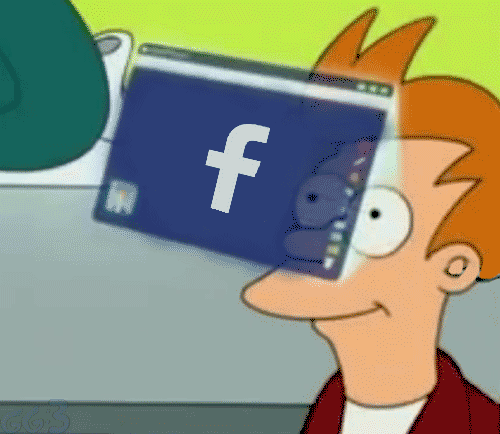
giphy
Lastly, it is so important when talking about digital media tools to consider the platforms available to the young Millennials. Take Facebook, for instance. When you are young, Facebook is a place where you make “secret groups” for conversations about what people said during lunch time. You take pictures and turn to the person taking the photo and say “make sure to upload this on Facebook.” Facebook is a site where you can be you and do whatever you want to be cool. Facebook today, however, can be much more than a merely social site. Jen Rajchel writes, “Facebook account once intended for high school friends quickly becomes a forum for college friends. It may also become a setting for a class assignment or an internship interaction. When these technologies are brought into the classroom and become platforms that facilitate similar environments, we begin to re-examine the boundaries of these intimacies: Do I use my personal Facebook for a course? Do I friend my professor? How do I brand myself on Twitter?” (Jen Rajchel, Consider the Audience, 2013). We are learning that these “fun” sites have a wider purpose and are actually opening up opportunities for us every day. Digital media outlets are starting to be a worldwide primary source of communication. Today we are engaging more online than ever before and, consequently, are able to quickly and effectively communicate with a vast audience on a wide range of topics. We can post articles on the upcoming election, regional news stories, and events from around the world. These posts attract other “friends,” and we connect and debate and learn more about and understand each other better as a result.
Now, my view. Throughout my teens and into my early days of being twenty, I have seen my Facebook, Twitter, and Instagram all transform from fun, casual, and sometimes silly, sites to actually very civilized and informative ones, and, I am happy to say, my experience with digital media is also evolving. Before I took this class, I had no idea of how to write a blog, or if I would ever be interested in even trying to write one. Well, that changed very quickly. By writing my travel blog, I have been able to reflect back on the past and recall some amazing trips that I have taken with my family and to share those trips in a fun and unique way. Not only do I enjoy remembering these trips but writing about them makes me feel thankful for the opportunity to have visited so many awesome places. I like being able to share with my friends and family pictures and commentary about different countries and cities and to recommend places to stay, eat and sites to visit when touring various places. And just the other day, a friend of my mom’s said she wanted to take her teenage daughter to California but had never been and was unsure where to go. You guessed it! My mom pulled up my blog “Globe Trotting Graham,” clicked on the “California Dreamin’” post and texted it to her friend! It’s awesome that my classmates are following my blog and equally great that I am following their blogs and learning and connecting more with them. Every class I feel I have more of a connection with my classmates just by looking at their blogs.
This summer, I had the great opportunity of having an internship at NBC Sports in Stamford, Connecticut. This internship allowed me to meet many people in the field that I am interested in and hope to be a part of in the future. I was able to connect and, more importantly, stay connected even after the internship was over with the people I worked with by using Twitter and Linkedin. I continue to post articles and still talk to them online about my posts and welcome their feedback. Some workers send me links of recent projects they are working on and still ask for my advice as to whether or not they should move forward with certain projects. Having an online media outlet not only connects you to people but allows you to explore new places, subjects, ideas that without digital platforms might remain elusive.
My goal beyond Dickinson is to work in the area of Communications for Sports. Broadcasting, programming, agencies, anything to do with sports and communication is what I would love to pursue. I know this field requires a strong working knowledge of digital media platforms, and this class has been a crucial first step in expanding my knowledge and hands-on experience in that area. Today digital media offers many possibilities and opportunities, and everyone should be on it. The internet will expand your knowledge and connect you to many people. My advice, take advantage of all the available digital platforms, stay connected to the people you have worked with and make sure to be smart about what you post. Hey, you never know, maybe you’ll be the next one to get a job because of your Twitter account!
Carroll, Brian. “Chapter 7: Blogito, Ergo Sum- Trends in Personal Publishing.” Writing for Digital Media. New York, NY: Routledge, 2010.
Fitzpatrick, Kathleen. “Networking the Field.” Planned Obsolescence. 10 Jan. 2012. Web. 02 Nov. 2016. http://www.plannedobsolescence.net/networking-the-field/
Madrigal, Alexis. “How to Actually Get a Job on Twitter.” The Atlantic. Atlantic Media Company, 31 July 2013. Web. 02 Nov. 2016. http://www.theatlantic.com/technology/archive/2013/07/how-to-actually-get-a-job-on-twitter/278246/
Rajchel, Jen. “Consider the Audience.” Web Writing Why and How for Liberal Arts Teaching and Learning. 15 Sept. 2013. Web. 02 Nov. 2016. (comments on paragraphs) http://webwriting2013.trincoll.edu/engagement/rajchel-2013
Rorabaugh, Pete. “Organic Writing and Digital Media: Seeds and Organs – Hybrid Pedagogy.” Hybrid Pedagogy. Digital Pedagogy Lab, 21 June 2012. Web. 02 Nov. 2016. http://www.digitalpedagogylab.com/hybridped/organic-writing-and-digital-media-seeds-and-organs/


